When Valentyna Danilova was a child, her family moved from northern Ukraine to the eastern Donbas area, where her father and then the man she married worked in the coal mines that are the lifeblood of the rust belt region bordering Russia.
Life got harder after the collapse of the Soviet Union in 1991, and when the Donbas mines struggled to pay their workers and strikes followed, Danilova returned with her husband and four children to her home province of Chernihiv, where she worked at a school and kindergarten across the street from their modest flat in the village of Yahidne.
Her mother stayed in Donbas but when Russian-led militants seized much of the area after Ukraine’s pro-western Maidan revolution of 2014, Danilova evacuated her from the conflict zone to the safety of Yahidne, which was a quiet place ringed by forests and fields.
When Moscow launched a full invasion of Ukraine two years ago, Danilova feared that Kremlin troops aiming to take Kyiv could come close to Yahidne, which sits halfway along a direct 200km route linking her nation’s capital with Russia and Belarus.
READ MORE
She did not panic when she heard the rumble of heavy vehicles near dusk on March 3rd, 2022, however, because it came from the woods behind the school rather than from the highway running north towards Chernihiv city, where the Russians were advancing.
“I thought it must be our boys. But when I looked out of the window and saw the ‘O’ painted on the side of the armoured vehicles, I realised it was the Russians,” she says, referring to a military identification mark that the invasion force used along with “X” and “Z”.
“My husband had just nipped out to take some leftovers to the compost heap, and he rang to say he didn’t dare come back to the flat because the Russians might shoot him. So he went to our daughter-in-law’s house in another part of the village,” Danilova (61) says.
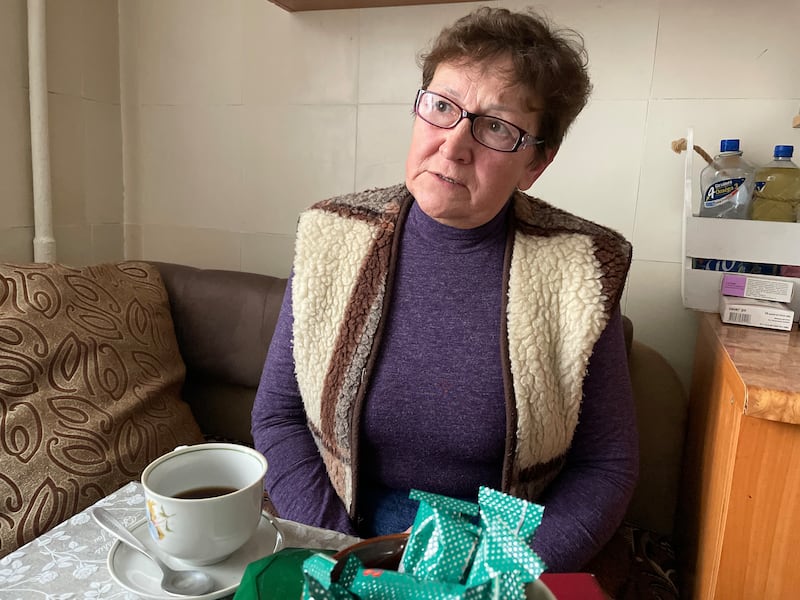
“The vehicles were moving very slowly and I could see gunners sitting on top. When they reached the corner of the street over there they began shooting. People told me later that they were shooting at the windows of people’s houses.
“Then they started knocking down fences and going into people’s gardens and setting up positions ... I brought my elderly mum here to get away from the fighting in 2014 and wanted to protect her from what was happening now. I couldn’t believe it had come here.”
It was the start of a four-week occupation during which the Russians would hold 368 people – almost the entire village – in the dank and unlit basement of the school where Danilova worked. Ten would not survive the ordeal, and other villagers would be shot dead before the Russians were finally driven out, leaving Yahidne as a scarred symbol of their brutality and a challenge to Ukraine’s pledge to bring war crimes perpetrators to justice.
While some soldiers set up artillery among Yahidne’s small houses and two-storey Soviet-built apartment blocks, others began banging on doors and windows and smashing through them if residents did not let them in.
They forced open Danilova’s metal door and demanded to know who was inside.
“Just two grannies,” Danilova said in response. “Just me and my mum, and my mum is ill and can’t really walk.”
When the Russians knew it was safe, “they came in and roamed around like they owned the place”, she says. “They went through the drawers and cupboards and took whatever they wanted – my husband’s clothes, warm coats, flashlights, batteries, tools and electronics. They stole it all.”
While soldiers traipsed in to take showers in her bathroom, Danilova says a senior officer lectured her about how Ukrainian president Volodymyr Zelenskiy was to blame for the war, that Russia had come to protect the village and how Kyiv’s forces would now start shelling its residents.
“Why would they? They’ll shell you but not us,” Danilova says she replied. “It wasn’t a very successful conversation and he left. That was a very hard night, very dark and scary.”
The next morning, she saw how the Russians planned to use Yahidne.
“They had set up mortars every 25m or so among the houses. Then they started firing, and I realised they were shelling Chernihiv [15km away]. They were using our houses for protection. The noise was terrible, just as it had been for my mum when the war began in Donbas.”
Danilova saw her neighbours moving for protection into the cellars under their homes and garden sheds but knew her mother would struggle with such steep stairs, so she asked the Russians if they could go across the street to the basement in the school.
She found the school caretaker and his wife down there, and left her mother with them to get blankets and a few supplies from home.
“As I was walking back over to the flat one of the soldiers fired a burst from his gun behind me, and giggled as if he enjoyed it,” Danilova says. “I just took a loaf of bread and a bottle of water because I thought we might be down there for a day or two at the most. But it didn’t turn out like that.”
Over the next hour or so, the soldiers went house to house in Danilova’s street and brought her neighbours to the basement, putting almost 40 people in the same room as her and her mother. Then all the other rooms in the basement and then the corridor began to fill up with captives from around the village, until nearly all of its 400 or so residents were under the school, including 69 children, the youngest just six weeks old.
The occupiers used the two floors above ground as a command post, medical point and barracks for ethnic-Russian soldiers, while troops from the Siberian republic of Tuva – one of Russia’s poorest regions, some 5,000km east of Ukraine – moved into people’s homes. Locals have no doubt that they were herded into the school to deter return artillery fire from Ukrainian forces – to serve as “human shields” for the Russians.
“It was difficult for everyone in the basement. People started to get fever and cough. There was no ventilation, which made it really hard for older people. Those on medication couldn’t get it. There was hardly any food or water, just enough not to die from hunger or thirst. Many people lost more than 10kg in weight that month,” Danilova says.
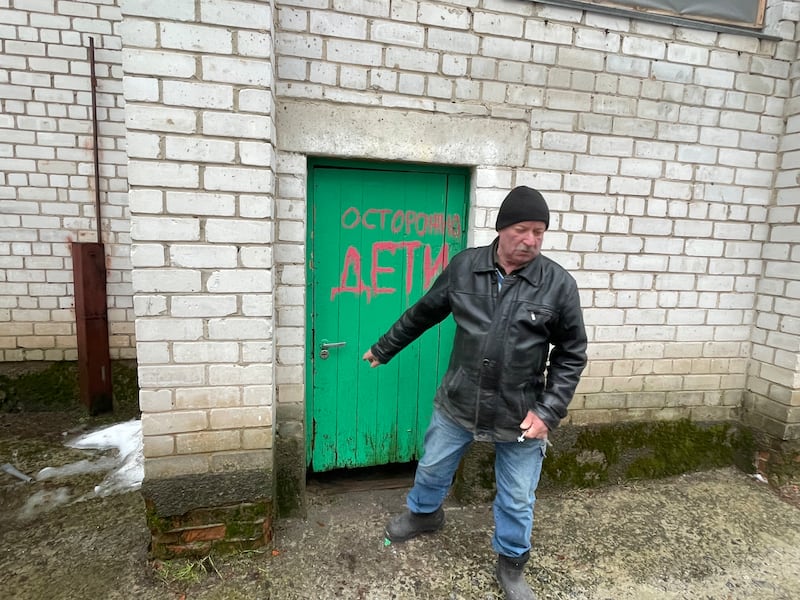
“At first we could go out to the toilet and stand in the schoolyard, and some people could go and feed their animals. Then that stopped and we were locked in most of the time, and they’d open up in the morning to let us go to the toilet. That was so humiliating – there were 37 people in that room, young and old and men and women, having to use that bucket in the night that was next to my chair.”
The first person to die in the basement was Dmytro Muzyka (91) on March 9th. His wife Maria died eight days later, and eight other people would die during the month.
“It was horrible to see how elderly, and then not-so-elderly people would start losing their minds and talking gibberish before they died,” Danilova says.
“If a person died in the daytime we could take the body out to the boiler room in the yard, but if it happened at night then the body would lie with us until the Russians opened the door the next day.”
Danilova found a piece of charcoal and began writing the names of the dead on a wall of the basement, alongside a calendar and then, when they discovered that at least seven people had been shot dead during the occupation of the village, she listed their names on the wall too.
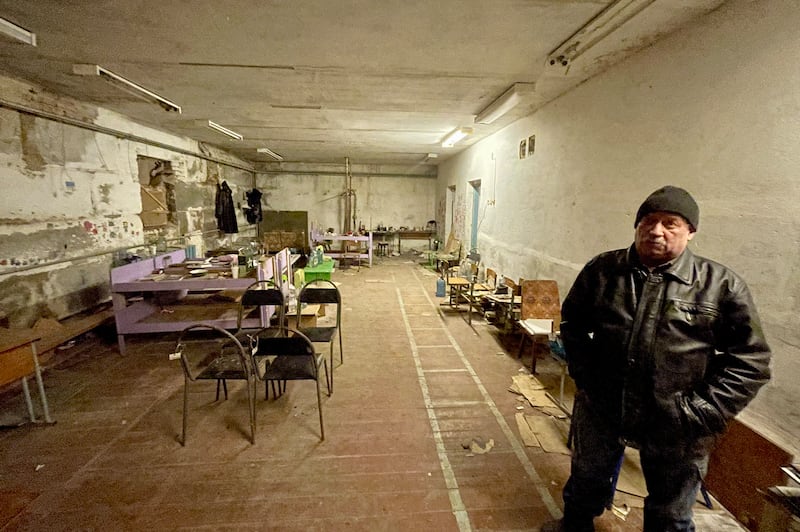
“It was so we wouldn’t forget who had died when we were down there ... I thought that we might not make it out, so at least someone would know what had happened here, who had died here, the names and the dates. It wouldn’t all be forgotten,” she says.
The Russians had taken their phones so the calendar helped them keep track of time and became “a morning ritual”, Danilova says: “A little boy who was next to me in the cellar would ask me, ‘Granny Valya, have put today’s date on the wall yet?’”
The villagers knew the end could come slowly or quickly. Several people were hit by shrapnel during brief forays out of the cellar and they feared the soldiers, some of whom drank heavily, would eventually shoot them all or toss grenades into the basement.
But on March 30th they heard engines roaring into life above ground, vehicles rumbling around the school and then silence falling. One man peered through a hole in the cellar door and saw no sign of the Russians. They had gone and the prisoners were free.
“Our lads came into the village the next day. What a feeling, to know that we were free,” Danilova says. “But I wanted to laugh and cry. It was a rainy day and the destruction around the village was terrible. Nearly every building was damaged.”
Like many of her neighbours, she evacuated to a safer part of Ukraine and wondered briefly whether she could return to the ruined village where she had experienced such horror: “But after a week I wanted to come home again.”
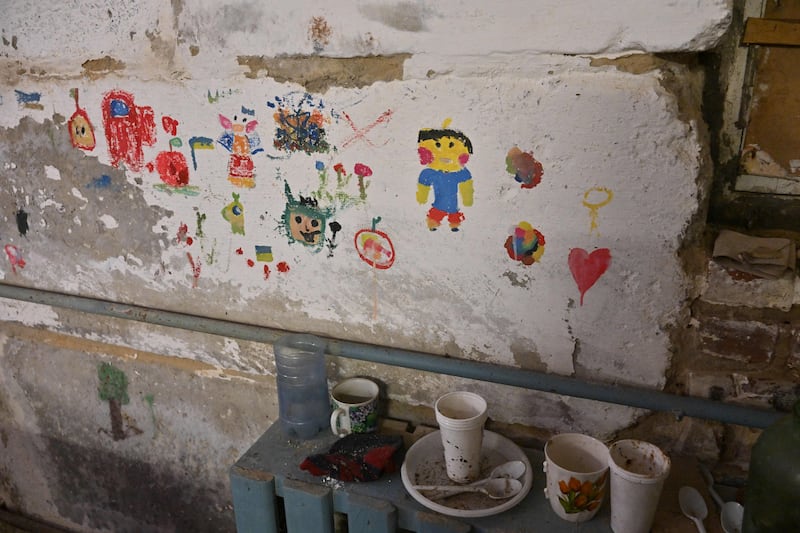
Ukraine’s prosecutors followed its soldiers, medics and aid workers into liberated Yahidne, and started collecting physical evidence and testimony to build war crimes cases against the invaders who had just retreated into Russia and Belarus.
Ukrainian courts have already sentenced three Russian soldiers in absentia to 12 years in jail for terrorising the Radchenko family and looting their home in Yahidne, and are now hearing the case against 15 soldiers over the imprisonment of 368 people in the cellar.
Prosecutors found military records and photographs of Russian troops who had been in Yahidne, which allowed villagers to identify those who had manned the basement prison.
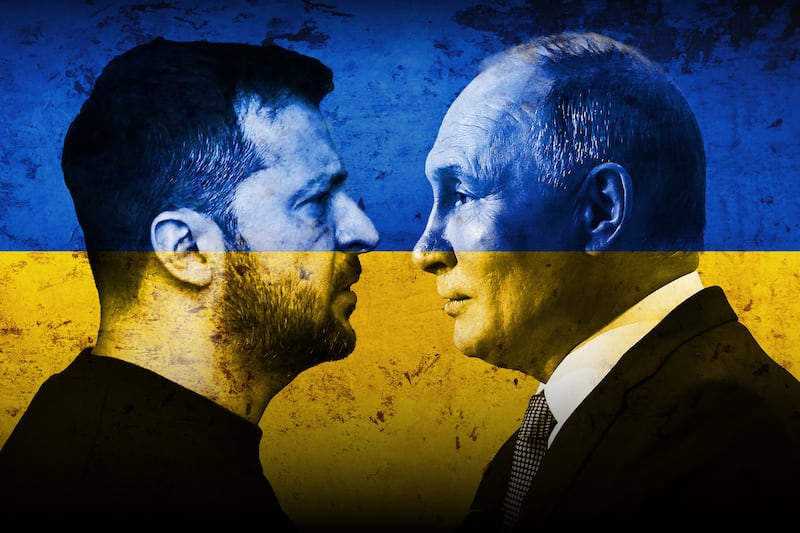
Locals realise their jailers are unlikely to be punished for their crimes, however.
“I wish they were all dead,” says Ivan Polhui, who was also kept in the cellar. “Russia won’t prosecute them or hand them over. In fact, they’ll probably get medals for the monstrous things they did here.”
It is even less likely that Moscow’s political and military leaders will face trial, but Ukraine insists that justice for war crimes victims must be part of any eventual peace settlement – all the way up the chain of command to Russian president Vladimir Putin.
“I want to thank local people ... from children to the elderly. Thank you for surviving, for managing to wait for our soldiers and for telling the whole world about the tragedy that the Russians, together with their leadership, have brought to our land,” Zelenskiy said in Yahidne last April.
“I can only add one thing – that after seeing all this, I hope the president of Russia will spend the rest of his days in a basement, with a bucket for a toilet.”
- See our new project Common Ground, Evolving Islands: Ireland & Britain
- Sign up for push alerts and have the best news, analysis and comment delivered directly to your phone
- Find The Irish Times on WhatsApp and stay up to date
- Our In The News podcast is now published daily – Find the latest episode here





















